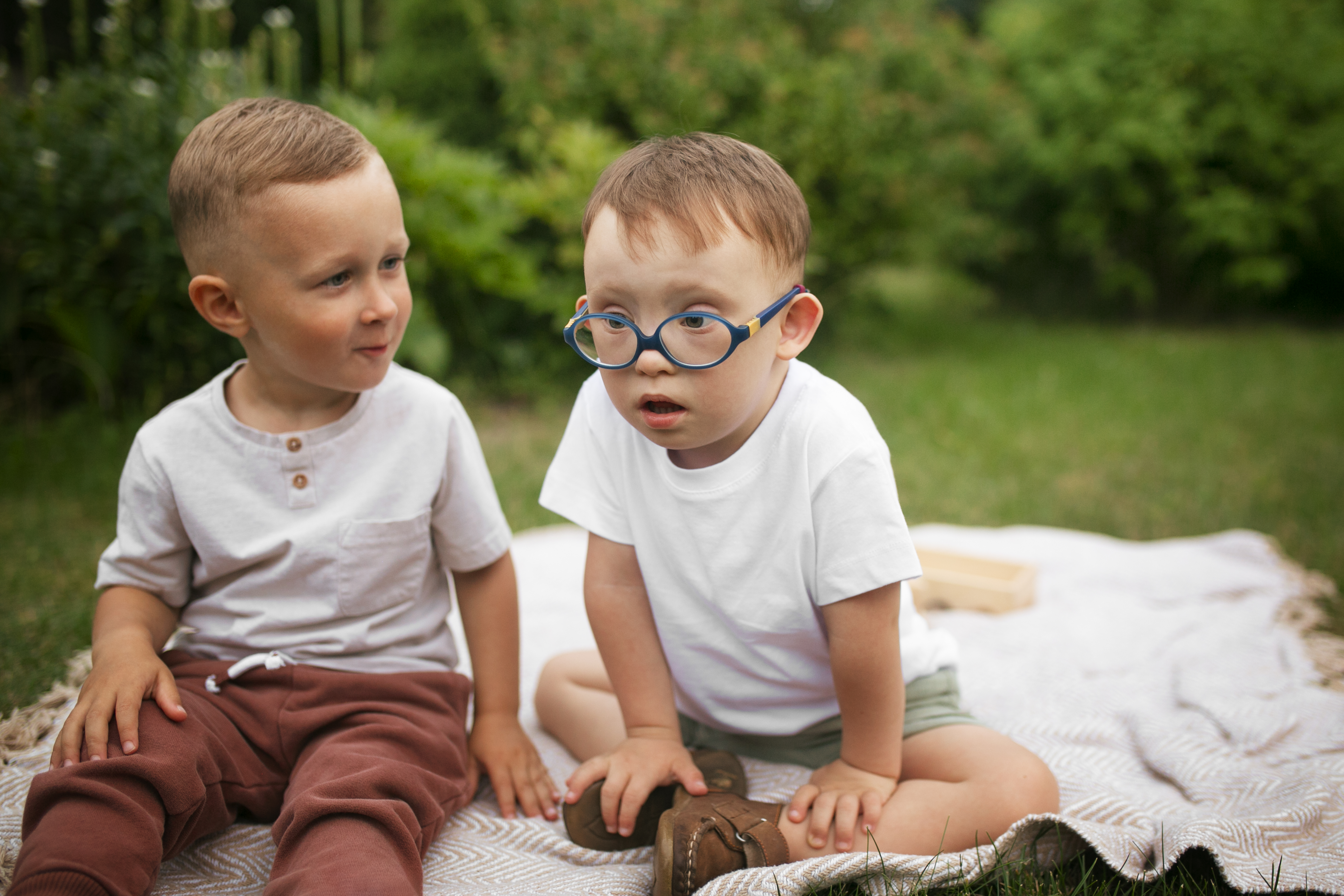
APPENDIX A:
Supporting Children Who Have Disabilities
Supporting Children Who Have Disabilities
Developmental Progress
Children who have disabilities may demonstrate progress in some domains at different rates than typically developing children. They may have very strong skills in one domain but need additional support to make progress in another domain. It may be useful to look at the Developmental Indicators for a younger age level for ideas of next steps for the child whose developmental level seems to be different from the Developmental Indicators located within the continuum for his or her chronological age. In some cases, adults may need to observe children who have disabilities more closely to notice their progress and may need to use alternate methods to help them demonstrate their capabilities. For example, a child who is nonverbal could be provided with technology such as a voice output device that allows the child to push a button that will speak for him or her in order to participate in a game with other children.
Individualizing
Adults may also need to tailor their curriculum and instructional strategies to meet the individual learning needs of children who have disabilities and to ensure each child is able to fully participate in all learning activities. For instance, the teacher could have the child point to pictures instead of talking when making a choice about which free play activity to join. Some strategies are included at the end of each domain section in this document.
The Goals, Developmental Indicators, and Strategies described in the Early Learning Guidelines are appropriate for children who have disabilities. However, adults will need to individualize their expectations and the opportunities provided for the child to demonstrate progress. Additionally, collaboration with families and other service providers is extremely important when supporting children who have disabilities as they make progress in the areas described in the guidelines.
Approaches to Learning Adaptations
Social Development and Emotional Development Adaptations
Communications, Language and Literacy Adaptations
Cognitive Development Adaptations
Cognitive Development Adaptations...cont.
Health and Physical Development Adaptations
Relationships
In addition, it is important to consider how peer relationships can benefit all children, including those who have disabilities. When designing learning activities, an adult could consider pairing a child who has a disability with a typically developing peer to help the child reach his or her goals, learn a new skill, or participate more fully. This approach helps to foster the emotional development and the social development skills for both children.
Family Engagement
Adults should keep in mind that all children benefit when their families are involved in the learning process. This is especially important for children who have disabilities. Family members can often provide valuable information about resources or tools they have found to be effective in meeting their child’s individual needs. In addition to the child’s family, adults may also communicate with other members of the child’s support system, such as specialists and therapists, to ensure that the child’s goals are being met and that they are demonstrating progress based on the Developmental Indicators.
For children who have identified disabilities, served through an Individualized Family Service Plan (IFSP) or Individualized Education Program (IEP), the child’s team members can be a valuable resource for additional support/strategies. Speech clinicians, occupational therapists, physical therapists, and those working in special education will have useful resources to support the child’s individual needs.

